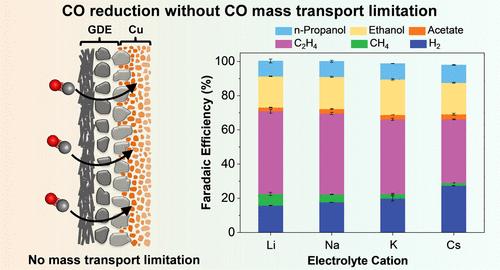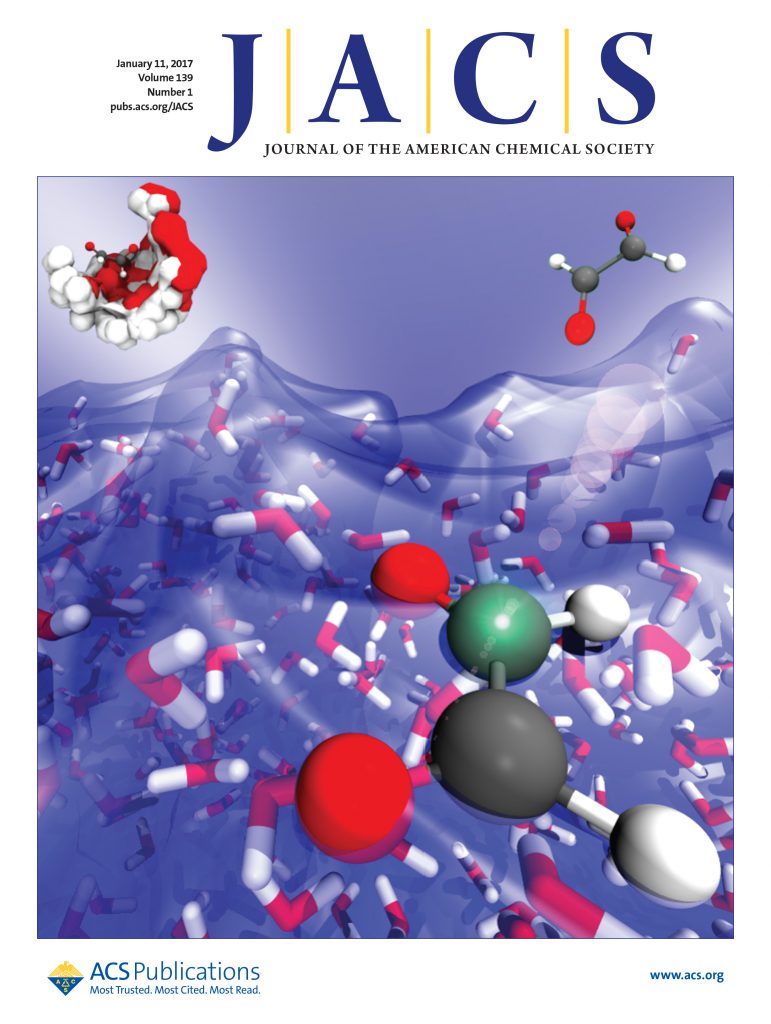碱离子电还原CO的质量输运相关C-C键形成
IF 15.6
1区 化学
Q1 CHEMISTRY, MULTIDISCIPLINARY
引用次数: 0
摘要
电解质阳离子特性影响CO2/CO电还原过程中多碳(C2+)的选择性。然而,之前大多数关于阳离子尺寸效应的研究都是基于h电池的结构,由于质量传输的限制,这可能会无意中扭曲阳离子效应的潜在机制,特别是对于CO还原。在没有CO输运限制的情况下,使用gde型流动电解槽,我们报告了总C2+产物对Cu的选择性与碱阳离子(Li+, Na+, K+和Cs+)无关。值得注意的是,高浓度的强水合阳离子(如Li+)会抑制CO还原过程中总C2+的形成,而在增加弱水合阳离子(如K+)浓度时,总C2+的选择性仍保持不变。进一步的研究表明,低阳离子浓度下的CO覆盖几乎与阳离子身份无关,而高浓度阳离子下的CO覆盖则强烈依赖于碱阳离子身份。本文章由计算机程序翻译,如有差异,请以英文原文为准。

Mass Transport-Dependent C–C Bond Formation for CO Electroreduction with Alkali Cations
Electrolyte cation identity has been reported to influence the multicarbon (C2+) selectivity in CO2/CO electroreduction. However, most of the previous work for cation size effect is based on H-cell configurations, which may inadvertently distort the underlying mechanism of cation effect due to mass transport limitations, particularly for CO reduction. Here, using GDE-type flow electrolyzers, we report that the selectivity of total C2+ products on Cu is independent of alkali cation identity (Li+, Na+, K+, and Cs+) in the absence of the CO transport limitation. Notably, a high concentration of strongly hydrated cation (such as Li+) inhibits the total C2+ formation in CO reduction, whereas total C2+ selectivity is retained upon increasing concentrations of weakly hydrated cation (such as K+). Further investigations reveal that the CO coverage at a low cation concentration is almost independent of the cation identity, but the CO coverage at highly concentrated cations strongly relies on the alkali cation identity.
求助全文
通过发布文献求助,成功后即可免费获取论文全文。
去求助
来源期刊
CiteScore
24.40
自引率
6.00%
发文量
2398
审稿时长
1.6 months
期刊介绍:
The flagship journal of the American Chemical Society, known as the Journal of the American Chemical Society (JACS), has been a prestigious publication since its establishment in 1879. It holds a preeminent position in the field of chemistry and related interdisciplinary sciences. JACS is committed to disseminating cutting-edge research papers, covering a wide range of topics, and encompasses approximately 19,000 pages of Articles, Communications, and Perspectives annually. With a weekly publication frequency, JACS plays a vital role in advancing the field of chemistry by providing essential research.

 求助内容:
求助内容: 应助结果提醒方式:
应助结果提醒方式:


